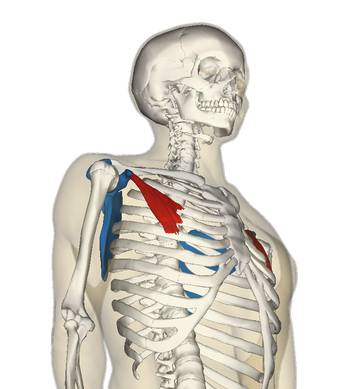We are how we move. Our soft tissue is always responding to the demands we put on it, willingly complying by creating tissue patterning that makes it easier for us to do what we do more, well, more. This means our tissue is staying hydrated and gliding where we keep moving, and gluing us up in the ranges that we avoid.
We are how we move. Our soft tissue is always responding to the demands we put on it, willingly complying by creating tissue patterning that makes it easier for us to do what we do more, well, more. This means our tissue is staying hydrated and gliding where we keep moving, and gluing us up in the ranges that we avoid.
Fascia (your connective tissue) can be your friend when it is adapting to support you in healthy ways, and it can be not so friendly when it starts to put the blinders on and gum up the works. It’s a basic use it or lose it set up. This is excellent news when what we’re doing with our bodies is perfecting the form of our deadlift. As we get more sophisticated in our movement, our tissue patterning allows for and adapts to this sophistication. However, this is not such great news when it comes to the sheer quantity of time we spend doing other less than helpful things.
Enter the ubiquitous keyboard. Whether it’s on a desktop, a laptop, or your phone, the odds are if you are reading this article you log more hours as a typing slave than you would like. Hey, look! I’m doing it right now! And while I love the fact that my keyboard means we all get to have this nice chat here at Pulse Beat Fit, it costs me. Specifically, it contributes to the plague of internal rotation that we are all living with these days.
And this plague is sabotaging you even when you’re not at your keyboard or phone tapping away. Your training time is not just when you’re at the gym, the box, the dojo, the trail, the pool, or wherever your favorite training grounds are. You don’t get to hit a magical pause button on how your body is responding to your work hours (not to mention texting hours or TV hours) and then conveniently hit “go” to get it to pay attention when you wrap up the workday and load up the bar.
Nope. Your body is very democratic. The thing you spend the most time doing is the thing with the most votes. Internally rotate your arms all day long while you work and you’ve got a pretty strong vote for an internally rotated humerus and shortened pectoralis minor muscle.
Sadly, this exact positioning is a set up for a shoulder impingement or rotator cuff or labrum teardown the road. This is especially true if you are creating this positioning with your workday, and then loading that pattern up in your training. CrossFitters, powerlifters, yogis, and swimmers are going to want to take extra note here.
So let’s take a look at what this all means and how it’s setting you up for unhappy shoulders. There is a whole lot to say here, so I’ll give you the abbreviated version, but just bear in mind that the un-abbreviated version has a more global physical impact than this short sketch will describe. (Also, read this excellent article that describes some of the mechanics I’m talking about specifically.)

A shortened pec minor, the little guy who sits deep to its better known neighbor pec major, will rotate your scapula forward and down, giving you that slumped shoulder look that you like so much. If you add to that taking the humerus (upper arm bone) into internal rotation while you type, then over time the humerus starts to live more comfortably at the front lip of the glenohumeral joint.
Once it is subtly displaced this way, it closes down the subacromial space even more, which means the supraspinatus and biceps tendons have less room to breathe and can wind up getting pinched every time you lift your arm. This sensation is what is commonly called a shoulder impingement. Do it enough and it’s like dropping a cinder block on a garden hose – it’s not subtle anymore.
Our bodies want to be happy and functional. No really, they do. Use them well and you’ve got soft tissue designed to happily glide and do its thing for 110 years or so. Yes, 110 – a fact that should suddenly illuminate impingement at age thirty for the red flag that it is.
So in case you’ve skimmed thus far and have missed my primary concern – it’s the toys. We love the toys – tablets, laptops, smart phones – the toys are good stuff. But they come with a price. If we aren’t paying attention to how our bodies interact with the toys and doing some consistent damage control throughout the day to remind our tissue of all the glorious movement ranges, we’re going to have some trouble.
And with that, here’s a little plan for addressing the internal rotation plague in two parts. First a video on how to sit at your work station including addressing the most common “good posture” errors that only make your shoulders crankier, and second my favorite stretch to pepper throughout the workday, which lengthens that pesky pec minor while also getting in a good dose of external rotation for the humerus.
Photo 1 courtesy of Shutterstock.
Photo 2 by Anatomography (Anatomography (setting page of this image.)) [CC-BY-SA-2.1-jp], via Wikimedia Commons.






